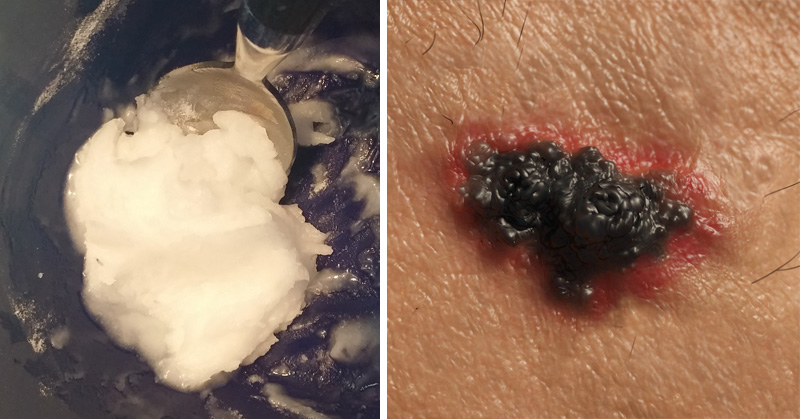Here’s an interesting story from a woman by the name of Kyneret Azizo.
For 3 years, Kyneret’s mother had been suffering from a type of skin cancer known as basal cell carcinoma. It’s the most common form of skin cancer, with more than 4 million cases of it being diagnosed in the U.S. each year.
Basal cell carcinoma differs from skin cancers like melanoma in that it is non-life threatening and tends to stay in an isolated area of the body.
Kyneret’s mother first began to notice the cancer when a small red mark appeared on the crown of her head. It continued to grow for 3 years before she finally decided to see a doctor about it.
(Note: Don’t wait that long. That’s a bad idea.)
After receiving a referral to a dermatologist, it was determined that the mark was indeed cancerous. It was surgically removed.
But not long after, it returned with a vengeance and grew even more rapidly than before.
Kyneret’s mother went through the removal procedure again. And then once more. When the basal cell carcinoma popped up for a fourth time, Kyneret and her mother decided to take matters into their own hands.
Equipped with information about a natural remedy involving sodium bicarbonate (baking soda), they set out to solve the recurring problem on their own.
The Surprising Results
Kyneret created a paste by mixing 1 part baking soda with 1 part coconut oil ( click here for International products ) in a shot glass. She then would apply the mixture – without rubbing it in – and let it sit.
She did this three times daily for the first week and then began doing it 2 times daily from then onward.
Day 1
Kyneret says that on the very first night, after two applications of the paste, the scab fell off on its own. The basal cell underneath was very tender and would bleed easily when touched.

Image: Kyneret Azizo
Day 5
Kyneret and her mother began to notice that the cell was shrinking in size. The area surrounding the scab was flaking but the coconut oil helped to clear the dead skin away and encourage new skin growth.
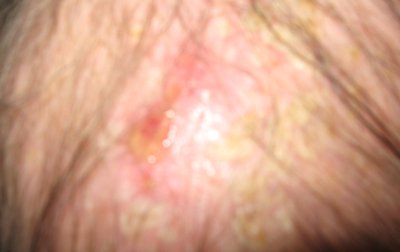
Image: Kyneret Azizo
Day 6
By day 6, Kyneret says the basal cell was completely gone, along with the bleeding.
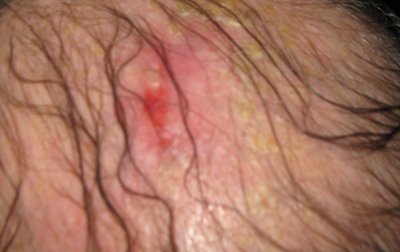
Image: Kyneret Azizo
Day 11
Kyneret says the skin where the basal cell used to be had become very tender. She applied Polysporin to help it heal without becoming infected.

Image: Kyneret Azizo
Day 14
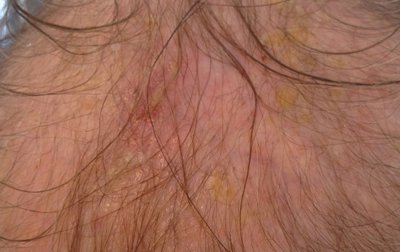
Image: Kyneret Azizo
By day 14 of the natural treatment, Kyneret and her mom began to notice that the wound where the basal cell used to be was getting smaller.
Day 18
Kyneret reports that the wound began closing itself up. They stopped using the baking soda at this point and instead focused on the Polysporin.
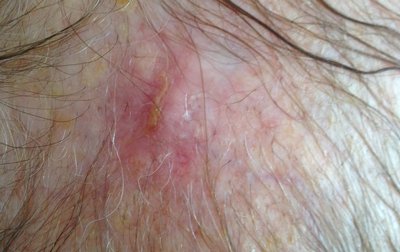
Image: Kyneret Azizo
Day 22
Kyneret reports that at this point, the wound closed up entirely and any leftover dead skin was able to be gently picked off.
The pair resumed the baking soda and coconut oil paste treatment to be safe.

Image: Kyneret Azizo
Aftermath
Kyneret’s mother’s doctor was shocked at just how well the basal cell had responded to baking soda and coconut oil.
The pair decided to stop the baking soda treatment completely to see what would happen.
The area stayed clear for several weeks until a new lesion began to appear. When the pair resumed natural treatment, it disappeared within a few days.
How It Works
Baking soda is highly alkaline. Cancer cells cannot thrive in an alkaline environment, a fact many holistic experts have been taking advantage of through the recommendation of alkaline diets.
The coconut oil ( click here for International products ) works to get rid of dead skin and help encourage new skin growth.
Kyneret makes a very important note about this treatment: it should not be taken as a kill-all when it comes to this form (or any other form) of cancer.
In reality, battling cancer using natural methods comes as a combination of many lifestyle choices, one of the most important of which is eating properly.
In this post, we discuss how you can reduce your risk of cancer by 50% with a few lifestyle changes, including eating healthy. Check it out!
Source:
Kyneret Azizo
SkinCancer.org
GreenMedInfo.com
MayoClinic.org


